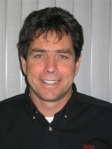Fortunately there is an independent certifying body for IAQ professionals that the public can seek to distinguish between a real professional in the field versus those who claim to be the ‘expert’. The American Council for Accredited Certification (ACAC) has more than 4,000 certified professional in the United States and abroad at the moment.
SteamMaster’s President and Owner, Gary Giman is a Council-certified Microbial Remediation Supervisor (CMRS). Gary has successfully remediated numerous mold removal projects in Vail, Breckenridge, Aspen, Snowmass, Winter Park, Granby and several other mountain communities in Colorado.
Here are some CMRS qualifications:
A CMRS can help design and maintain effective containment to control and safely clean, treat or remove structures and contents affected by microbial contamination. A Council-certified Microbial Remediation Supervisor (CMRS) can design remediation protocols or follow established protocols and industry standards. A CMRS has verified knowledge of the microbial remediation field.
The CMRS examination covers the most respected reference texts in the industry. Candidates for the CMRS must know the important industry standards. They must be familiar with scientific principles governing mold and the indoor environment. They must understand the most common practices and protocols used by remediators. They must be familiar with the equipment used in mold remediation. They must be aware of legal issues affecting their work
Each CMRS has demonstrated at least five (5) years experience in mold remediation and mold removal in one or more of the following settings:
Offices and commercial buildings
Industrial structures
Government facilities
Schools and public buildings
Healthcare facilities
Residential structures
To earn the Council-certified Microbial Remediation Supervisor designation, every candidate must:
Demonstrate at least five (5) years of verifiable field experience in microbial remediation
Pass a rigorous examination based on broad industry knowledge rather than a course curriculum
Earn the unanimous approval of the CMRS certification board
Re-certify every two years
Participate in 20 hours of professional development activities each year
Maintain the highest ethical standards
The CMRS certification is accredited by the Council for Engineering and Scientific Specialty Boards (CESB), a nationally recognized independent accreditation body. ACAC certifications are the ONLY designations in the indoor air quality field to earn CESB accreditation.





